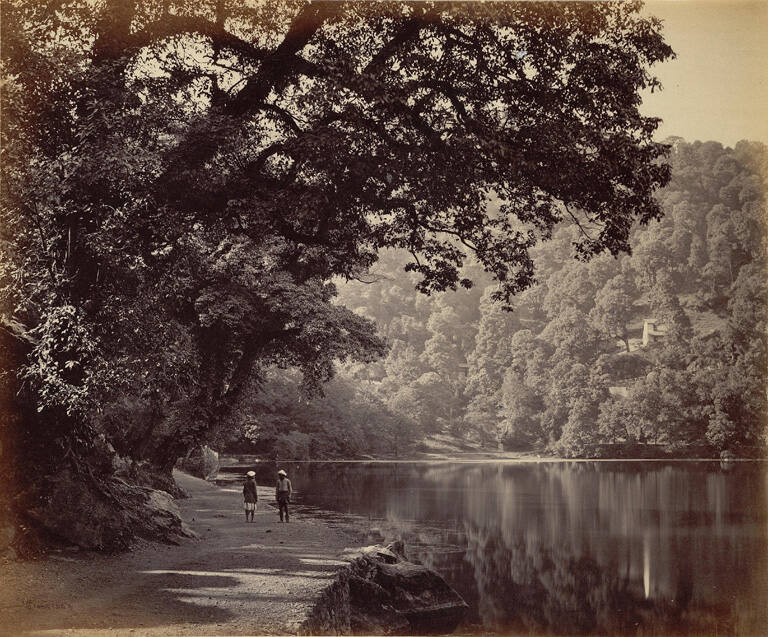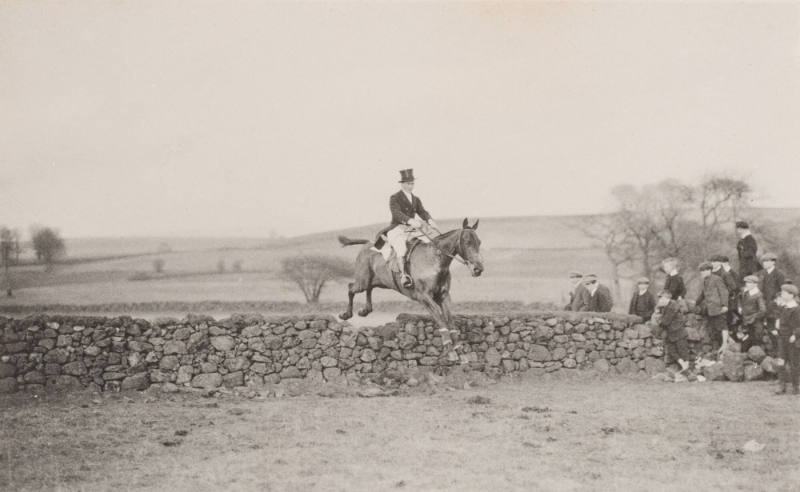
Object Details
Artist
Samuel Bourne
Date
1860s
Medium
Albumen print
Dimensions
Image: 9 1/4 × 11 1/4 inches (23.5 × 28.6 cm)
Mat: 16 × 20 1/2 inches (40.6 × 52 cm)
Credit Line
Gift, by exchange, of Arthur Penn, Class of 1956, and Marilyn Penn; Christopher Elliman; David Elliman; and Andrea Branch
Object
Number
92.069.001
Photographer Samuel Bourne would probably have needed at least fifty workers to trudge his heavy pho(…)
Photographer Samuel Bourne would probably have needed at least fifty workers to trudge his heavy photographic equipment up to the hill-station town of Nynee Tal (now Nainital) in the Kumaon foothills of the Himalayas in India to set up a portable photographic laboratory and take this archetypal view of the placid tal (lake), majestically framed by giant trees. However, here we see only two colonial male servants, and the area had likely been purged of local residents. While the men would have had to stand still for long periods of time for the photograph, they are also made to appear subdued and governable; we can spot a likely colonial forest-range officer’s base firmly nestled in the hills.
This colonial aesthetic of placing staffage emerged as a trend after the First War of Indian Independence in 1857. Such generalized pictures of the unthreatening native body are dwarfed in the larger scheme of colonial expansion and adventure. They were circulated widely as affirmative photos and picture postcards for colonizers, and mirror American frontier images that were admired for the powerful unknown and their sublimity. Nainital acted as a cool summer retreat for colonial officials and their families, like the official British summer capital of Shimla, where Bourne had a studio with other photographers.
—Ayesha Matthan, PhD candidate












